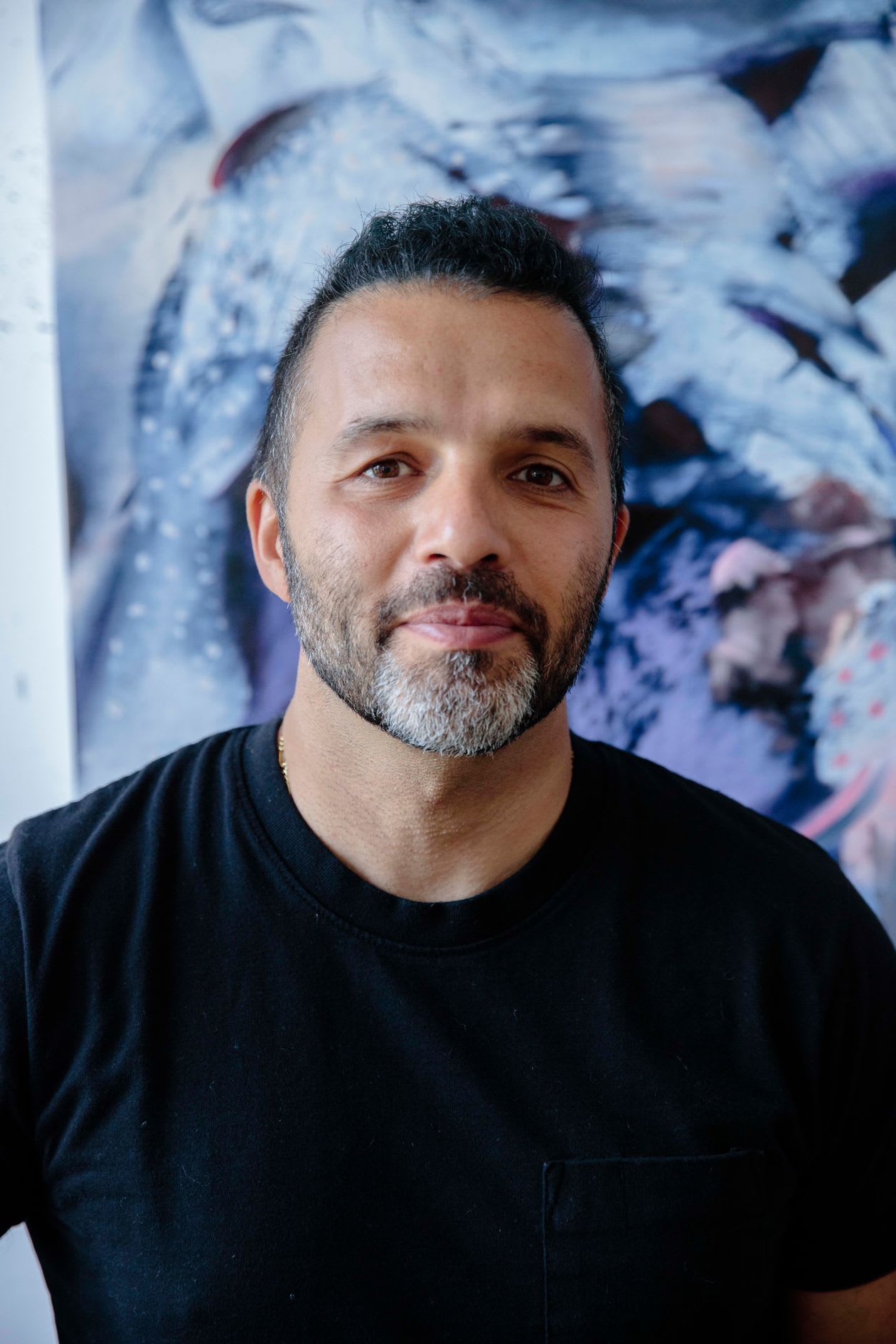As a boy in Tehran in the 1980s during the Iran-Iraq War, Ali Banisadr had a friend whose apartment building was sliced neatly in half by a bomb, revealing a cross-section of its interior. From the street, he could see the room where he had played, complete with wallpaper and children’s toys.
Born in 1976, Mr. Banisadr was 12 years old when his family moved to the U.S., but his tumultuous childhood still fuels his work as an artist. That is clear in his new show, which opened this week at the Wadsworth Atheneum Museum of Art in Hartford, Conn., and includes a dozen paintings and prints made over the last five years. The references are as current as Covid-19 and the George Floyd protests, but Mr. Banisadr’s work is also rooted in art history. He often evokes the world of Hieronymus Bosch, creating large canvases thickly populated with creatures that are mixtures of human, animal and robot. The work of Bosch “never stops giving,” says Mr. Banisadr, “He had this way of zooming out and looking at the world from…a macro level,” showing “the folly of humanity in general. I’m in tune with that.”
The new exhibition is part of the Wadsworth’s Matrix series, which has given major contemporary artists like Gerhard Richter, Carrie Mae Weems and Barbara Kruger their first solo museum shows in the U.S. Patricia Hickson, a curator of contemporary art at the Wadsworth, observes that Mr. Banisadr’s work has a special mixture of timeliness and timelessness that puts him outside the mainstream: “I don’t really see him fitting into current trends,” she says.
To accompany his paintings, Mr. Banisadr has curated a small exhibition of works from the Wadsworth’s collection, reflecting his deep awareness of art history. Among the items he chose are “The Temptation of St. Anthony,” by an unidentified 16th-century artist who used Boschian imagery; fantastic images by Francisco Goya and the Surrealist Max Ernst; and a woodblock print by the 19th-century Japanese artist Hiroshige. Mr. Banisadr says that he turns to these works for guidance, noting that when he makes a painting he wants “to see many different ways of painting…worlds within worlds.”
Mr. Banisadr’s canvases can be large—the most recent in the show is 10 feet wide—allowing him to contrast a hellish scene in the lower half of the painting with benign, even miraculous events in the upper half. In “The Prophet” (2020), a tiny inset at the bottom right—almost a picture in a picture, he says—shows crucified figures. Nearby, two creatures face off: One holds a stick covered at one end with what could be water or solid white material, while the other, the artist says, may have “some kind of mold or vegetation growing out of their body.”
Another part of the painting reflects its birth last spring, as the Covid-19 pandemic took hold in the U.S. A figure decked out in porcupine-like spikes is coughing little red droplets; next to it, candles seem to dance. In the top half of the picture, gold material explodes like a firework against a serene, blue background. Suspended above the convulsive scenes below, it looks like a “a sort of miracle,” Mr. Banisadr says. “I thought maybe that’s the prophet…something that’s going to change everything.”
Mr. Banisadr has been making art since childhood. After high school, he joined a group of young artists in San Francisco who inspired him to experiment. He went on to attend art school, and today he lives in Brooklyn, where he had a front-row seat for last summer’s unrest following the killing of George Floyd. The title of one of the new paintings in the show, “Only Breath,” echoes a plea for universality by the 13th-century Persian poet Rumi: “Not Christian or Jew or Muslim, not Hindu, Buddhist, Sufi, or Zen.…first, last, outer, inner, only that breath breathing human being,” in Coleman Barks’s English rendering.
The title also evokes the breath that can transmit Covid-19, cries of protest and Floyd’s dying plea that he couldn’t breathe. The painting’s main figure is purple and threatening. The picture “wanted to come out right away,” Mr. Banisadr. While he was working on it, the sounds of fireworks and chaos filled his home. When he glimpsed a police helicopter through his window, he immediately put it into the painting’s upper right corner.
Another painting in the show, “Red,” was completed before the pandemic struck but evolved in response to events. Originally intended for the Art Basel Hong Kong art fair, which was canceled in February because of Covid-19, “Red” had always depicted a perilous world, with a fire-alarm red sky and an eerie blue moon or sun. When the painting was returned to him from Hong Kong, Mr. Banisadr added a red-eyed figure, possibly made of coal, holding a shovel with a crown symbol—an allusion to the coronavirus.
Sound has an important place in Mr. Banisadr’s work. The memory of vibrations from bombs falling outside his basement shelter in Tehran started him on a career-long effort to translate sound into visual equivalents. In “Red,” for example, he imagines one figure’s head chiming like a bell, emitting little yellow crowns. Mr. Banisadr’s paintings begin with abstract colors, he says: “I know a figure needs to come out when I actually can hear it breathing.”
Appeared in the October 24, 2020, print edition.



